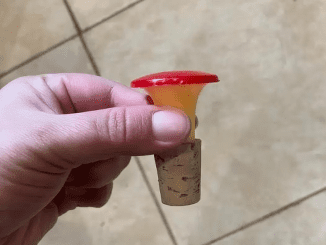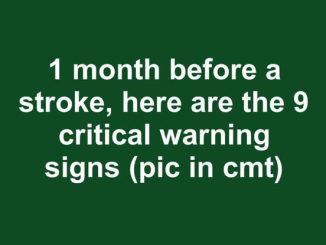Achieving a perfect smile often requires a significant investment of time, money, and effort. Many people wear braces, visit the dentist regularly, and keep up with the latest in oral care to maintain straight, white teeth. However, as we age, even the best dental care can’t always prevent certain issues, such as the appearance of black triangles between our teeth. But what exactly are these black triangles, and how do they form? Dr. Abdul Azizi, a prominent UK dentist, sheds light on this common concern and offers insights on prevention and treatment.
Dr. Abdul Azizi is a Principal Dentist at the Harley Private Dental Clinic in Sheffield, England. Known for its luxurious setting and high-quality care, the clinic offers a range of services, including general dental care, implants, and cosmetic treatments. With an impressive educational background in biomedical science and a Bachelor’s degree in Dental Surgery, Dr. Azizi is well-equipped to address various dental concerns, including the perplexing issue of black triangles.

Understanding Black Triangles
Black triangles, also known as open gingival embrasures, are small gaps that appear between the teeth, usually near the gum line. These spaces can trap food and plaque, making them more noticeable and potentially leading to other oral health issues. According to Dr. Azizi, “Black triangles between your teeth are not inherently dangerous but may be associated with oral health concerns, like gum disease or gum recession.” They’re not necessarily a sign of poor hygiene but can be caused by various factors, including genetics, tooth shape, size, and placement.
Causes of Black Triangles
Black triangles can develop for several reasons, and understanding these causes is key to preventing and treating them.
1. Gum Recession Gum recession occurs when the gum tissue surrounding the teeth begins to pull away, exposing more of the tooth or its root. This is often seen in older adults and can be a significant cause of black triangles.
2. Bone Loss Bone loss, whether due to aging or periodontal disease, can lead to the formation of black triangles. As the bone supporting the teeth diminishes, the gums recede, creating spaces between the teeth.
3. Periodontal Disease Periodontal disease, or gum disease, is another major cause of black triangles. This condition leads to the deterioration of the gums and supporting bone, which can result in gaps between the teeth.
4. Orthodontic Treatments Interestingly, treatments like braces can sometimes contribute to the formation of black triangles. While braces are designed to align the teeth, they can also cause changes in the gum line, leading to the appearance of these gaps.
A Different Perspective: Dr. Anna Peterson
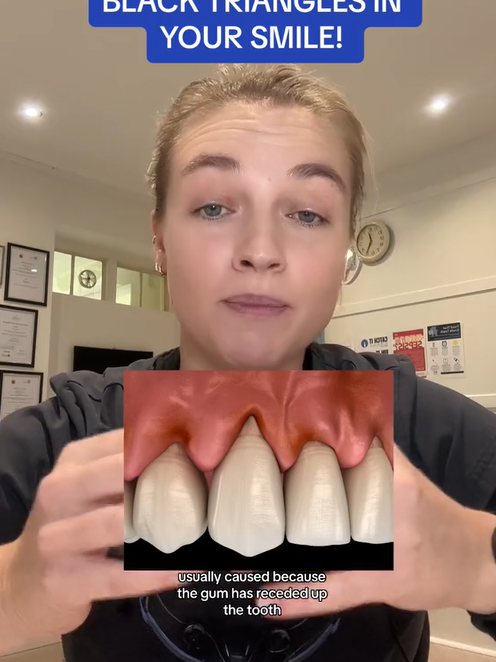
Photo Credit: @annapetersondental | TikTok
Dr. Anna Peterson, a well-known London-based dentist with a large social media following, offers another perspective on black triangles. She explains that these gaps can sometimes be a sign of something positive, particularly after periodontal treatment. “In some cases, the black triangles that pop up in between teeth at the gum line can be a sign that inflammation has reduced following periodontal treatment,” she notes. This insight highlights the complexity of black triangles and the importance of understanding their underlying causes.
Other Contributing Factors
@annapetersondental Is she great or what, forever thinking this when I brush my teeth now. #dentaladvice #learnontiktok #brushingmotivation #motivationtobrush #pretty #lgbtq ♬ original sound – Anna Peterson
In addition to the causes mentioned above, black triangles can also result from pregnancy, diabetes, or other medical conditions. The use of tobacco products is another contributing factor, as smoking can lead to gum recession and bone loss, exacerbating the issue.
Preventing Black Triangles
Prevention is always better than cure, and there are several steps you can take to minimize the risk of developing black triangles.
1. Good Oral Hygiene Dr. Peterson recommends cleaning between your teeth at least once a day using floss or an interdental brush. Regular brushing and flossing are crucial for preventing gum disease and tooth decay, both of which can contribute to the formation of black triangles.
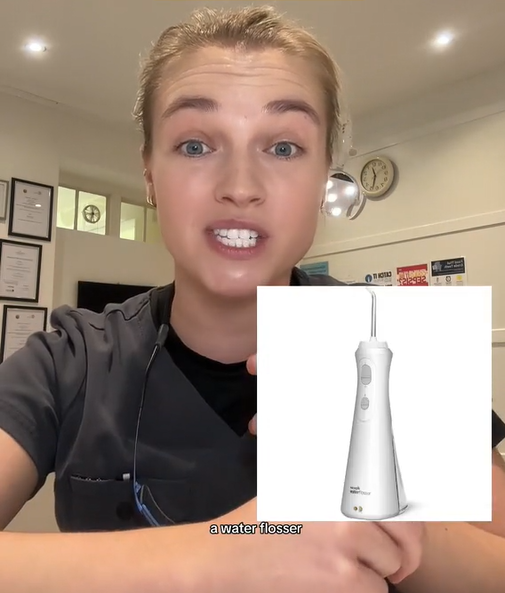
2. Regular Dental Visits Visiting the dentist at least once or twice a year is essential for maintaining good oral health. Regular check-ups allow your dentist to monitor your gum health and catch any issues early before they develop into black triangles.
3. Avoid Tobacco Products Smoking and the use of other tobacco products can accelerate gum recession and bone loss. Quitting tobacco can significantly reduce your risk of developing black triangles and improve your overall oral health.
Treating Black Triangles
If you already have black triangles, don’t worry—there are several treatment options available.

1. Orthodontic Correction Misalignment can sometimes be corrected with the help of an orthodontist. Treatments like braces or Invisalign can help close the gaps and improve the overall appearance of your teeth.
2. Gum Grafting Gum grafting is a surgical procedure where tissue is taken from another part of your mouth and grafted onto the area with gum recession. This can help fill in the black triangles and restore your smile.
3. Veneers or Dental Bonding For a cosmetic solution, veneers or dental bonding can be used to cover the black triangles and improve the appearance of your teeth. These treatments provide a quick and effective way to enhance your smile.
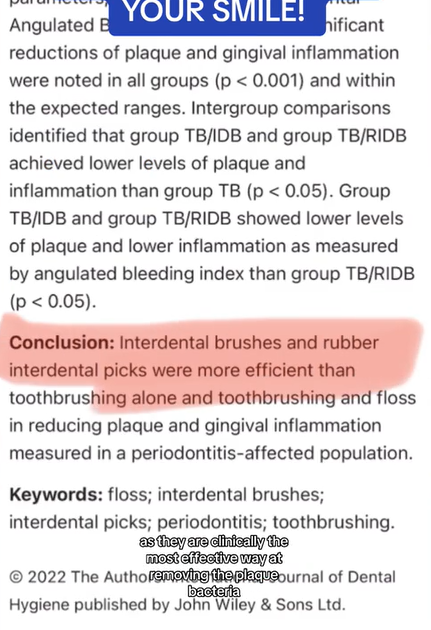
Photo Credit: @annapetersondental | TikTok
4. Hyaluronic Acid Treatment Some studies suggest that hyaluronic acid treatments can improve the appearance of black triangles, although research on this method is still limited. It’s important to consult with your dentist to determine the best treatment option for you.
The Best Approach
“The best approach to address black triangles between your teeth will depend on the underlying cause and your specific oral health and cosmetic concerns,” explains Dr. Azizi. Consulting with a dentist or orthodontist is crucial for determining the most appropriate treatment plan.
Conclusion
While black triangles may be an unwelcome sight, understanding their causes and knowing how to prevent and treat them can help you maintain a beautiful smile. Whether it’s through good oral hygiene, regular dental visits, or specific treatments, taking action now can prevent these gaps from affecting your confidence and oral health in the future.
